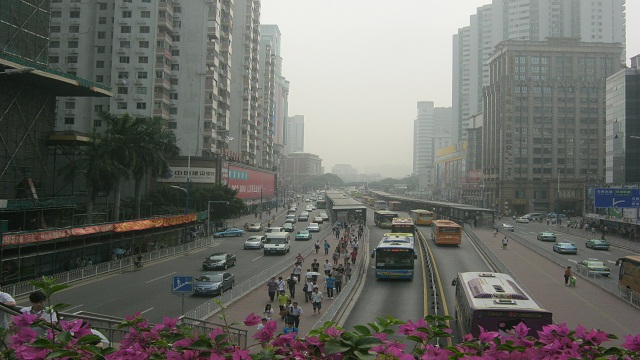SUMMARY
This is AI generated summarization, which may have errors. For context, always refer to the full article.

MANILA, Philippines – Even with difficulties, the national government is keen on developing a Bus-Rapid-Transit (BRT) system in Metro Manila to help ease traffic congestion in one of the world’s mega cities.
At the Economic Journalist’s Association of the Philippines (EJAP) Economic Forum 2012 on Thursday, November 22, Department of Transportation and Communication (DOTC) Secretary Joseph Emilio Abaya said BRT will soon become a reality for residents of Metro Manila.
A BRT system features buses that run along segregated lanes in the middle of highways. Just like the rail system, it has stations in strategic areas that can be accessed by footbridges or pedestrian crossings.
BRT is fairly new in the Philippines. Cebu is now in the process of building one.
This transportation system also remains unpopular given the country’s experience with city buses.
Right now, to get from one point to another, passengers in Metro Manila either take the Light Rail Transit and Metro Rail Transit systems or the buses and jeepneys. An MRT ride from end to end of the major thoroughfare EDSA takes around 30 minutes. A bus ride takes two hours.
Abaya said the current bus system is inefficient due to the fact that bus lanes are not exclusive, and buses are not integrated — something that the BRT system will have.
“Road space is a scarce resource. It is the responsibility of the state to manage this. It’s better to move Filipinos through intelligent buses than cars,” Abaya said.
“The use of BRT requires a paradigm shift. We will bring the BRT to Metro Manila. It will soon be a reality in our neighborhood,” he added.
The Ayala BRT
There is a current proposal for a BRT in Makati City.
The Ayala’s proposed BRT will run from EDSA and traverse Ayala Avenue, enter Buendia Avenue and end at the LRT Line 1 Buendia station.
While this is a good proposal, it presents issues on land ownership. Abaya noted that Ayala Avenue is privately owned by the Zobels while a part of Buendia, particularly the area near Taft Avenue in Manila, is owned by the government.
He said the Department of Justice (DOJ) already issued a resolution on this matter. The DOJ said the government can charge Ayala a certain fee for using public right of way.
Other issue concerning the BRT in Makati involves the jeepney drivers who ply the Makati routes along Buendia, Ayala Avenue, and the area near the Makati City Hall.
Abaya said for the BRT to become viable, there should not be any competing public transportation utilities. This requires the elimination of jeepneys in Makati, a move that could render thousands of drivers jobless.
He said one of the solutions being studied is to invite drivers to become drivers of BRT buses. But this, he said, will require a careful balancing act.
“By design the buses and jeeps should serve as feeder transprtation to bring passengers from the esquinitas around Makati or Bel-Air or City Hall area to bring passengers to the BRT system,” he said. “It is proceeding along, we’re just tackling those issues and eventually, we’ll bring it to NEDA (National Economic and Development Authority).” – Rappler.com
Add a comment
How does this make you feel?
There are no comments yet. Add your comment to start the conversation.